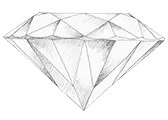DIAMOND EDUCATION
In Greek – adámas – means unbreakable. Diamonds are the oldest gemstones and hardest raw materials on earth, which are also used for decorative purposes. Diamonds consist of crystallized carbon, which was created millions of years ago under immense heat (about 1,250°) under high pressure (40-60 atmospheres) at a depth of 150-200 km, in the melting pot of glowing lava. Volcanic eruptions threw the raw crystals to the surface. Most diamonds are over 100 million years old.

4Cs of the Diamond
Carat
The unit of weight by which a diamond is measured. 1 carat is one fifth of a gram (0.2 g). A 1-carat diamond weighs 100 points. Ct is the abbreviation.
Diamond Cut
Diamonds in this range are on the top of the all grade settings and very rare due to perfect interaction of its facets and light. These diamonds reflect the light best and sparkle so intensely among all the diamond categories.
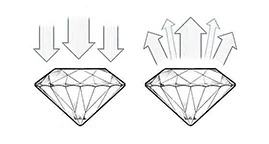
Diamond Clarity
Diamonds in this range are considered as having the highest cut grade. The interaction of facets shows a good balance and deliver fire and brightness in a diamond.
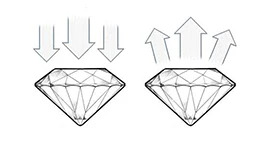
Diamonds in this range produce slight fire and sparkle comparing to the ideal cut diamonds and deliver slight darkness.
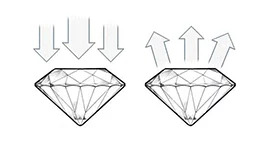
Diamonds in this range reflect limited light and brilliance.

This clarity scale is considered from flawless to internally flawless. These diamonds do not include any inclusions. Internally flawless diamonds may only contain faint external blemishes, which is removable by republishing. Flawless and Internally Flawless diamonds are very rare.
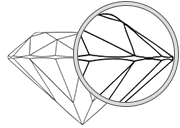
Diamonds with this clarity may contain very, very slight inclusions, that are extremely hard to detect under 10X magnification mirror and not noticeable with naked-eye.
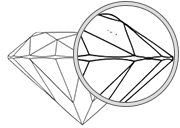
Diamonds with this clarity contain very slight minor inclusions that can be seen under 10X magnification mirror and are not noticeable with naked-eye.
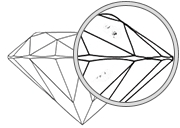
Diamonds in this clarity group include slight inclusions that can be detected under 10X magnification mirror.

Diamonds contain slight inclusions, are noticeable under graded 10X magnification and visible to the naked-eye under close examination.
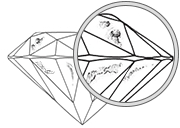
Diamonds contain obvious inclusions that may affect the brilliance of the diamonds. Inclusions on these diamonds are visible to naked-eyes.
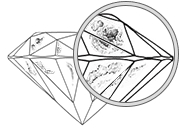
Diamond color
D diamonds are the finest white and colorless; the rarest color grades and have the highest value.
E diamonds are the second highest color grade in “colorless” scale. E diamonds are referred as rare white and exceptionally fine.
F diamonds are on the last grade of “colourless” scale and considered as rare and fine white diamonds.
G diamonds are on the first place to “near colorless” scale; are very valuable. They contain slight traces of white color.
H diamonds are on the “near colorless” scale and slightly cultured. The color on the H diamonds can only be detected when compared with other colorless diamonds.
I diamonds are slightly tinted and considered as “near colorless”. The slight color on the I diamonds may be detected.
J diamonds are considered as on the last scale of “near colorless” grade. The slight white color of J diamonds can be detected.
K-Z grade diamonds are considered as slightly cultured to cultured diamonds; from light yellow to yellow.
